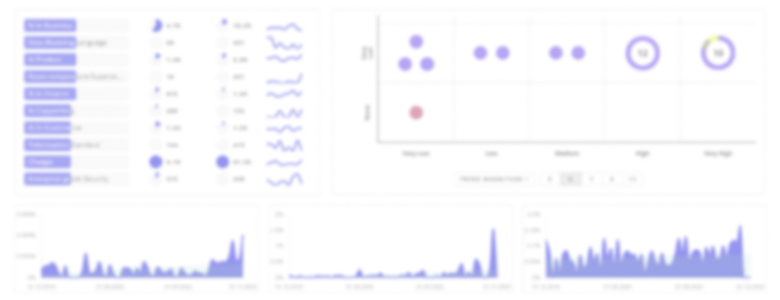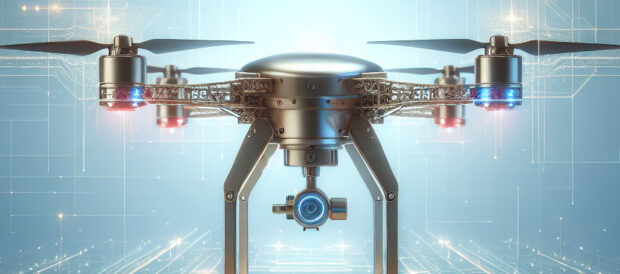
Neuromorphic Computing Report
: Analysis on the Market, Trends, and TechnologiesThe neuromorphic computing sector is characterized by its brain‐inspired architectures designed to achieve ultra‐low power and low‐latency performance in edge applications, including autonomous robotics, wearable healthcare, and security systems. Despite some metrics indicating slowing growth and reduced media coverage in certain facets of the technology, significant investments, diverse patent filings, and rising applications in edge computing and sensor integration point to a resilient innovation landscape (Fortune Business Insights, Globenewswire).
We last updated this report 217 days ago. Tell us if you find something’s not quite right!
Topic Dominance Index of Neuromorphic Computing
To gauge the impact of Neuromorphic Computing, the Topic Dominance Index integrates time series data from three key sources: published articles, number of newly founded startups in the sector, and global search popularity.
Key Activities and Applications
- Real-Time Edge Processing:
Neuromorphic processors are deployed to process sensor data in real-time with minimal energy consumption, as seen in applications like event-based vision and auditory processing. - Autonomous Robotics and IoT:
The technology enables autonomous navigation and decision-making onboard robots and drones by mimicking spiking neural networks, thereby offering robust performance in dynamic environments. - Healthcare and Wearable Devices:
Neuromorphic computing supports medical and health-related applications such as wearable biosignal processors for anomaly detection and brain-computer interfaces, improving real-time monitoring and diagnostics. - Smart Vision and Security Systems:
Devices like event-driven neuromorphic vision sensors facilitate applications such as gesture recognition, obstacle detection for autonomous vehicles, and security surveillance with drastically reduced latency.
Emergent Trends and Core Insights
- Increased Investment Despite Mixed Growth Metrics:
While internal trend analyses indicate a decline in the number of companies and news coverage over the past five years, augmented funding rounds and sustained R&D efforts—evidenced by multiple patent filings across regions—underline an environment of concentrated and strategic investment. - Advances in Hardware – Spiking Neural Networks and Beyond:
Neuromorphic devices employing spiking neurons mimic biological processes more naturally than traditional architectures, with enhancements in low-power operation and scalability (News: Neuromorphic Computing Enhance Computing Efficiency). - Integration with Complementary Technologies:
There is growing convergence between neuromorphic computing and fields such as photonic computing and resistive memory technologies, which enhance processing speeds and energy efficiency. - Applications Concerned with Edge AI:
The shift towards on-chip, edge-based processing is evident in offerings from companies like BrainChip and Gemesys, which emphasize the reduction of latency by processing data locally rather than in cloud-based systems. - Patent Activity as a Marker of Innovation:
Numerous patent filings demonstrate the wide-ranging development activities in neuromorphic architecture across global markets—for example, inventions focusing on device layout with neural circuits and synaptic weights.
Technologies and Methodologies
- Neuromorphic Hardware Architectures:
Companies are designing mixed-signal and fully digital neuromorphic processors that incorporate spiking neural networks to emulate the efficiency of biological neural circuits. - Event-Driven Processing:
The adoption of event-driven data processing enhances the responsiveness and energy savings, crucial for applications in real-time sensor networks and edge AI (News: Neuromorphic Computing: Emulating the Amazing Human Brain). - Memristors and Resistive Memory Technologies:
These components are increasingly integrated into neuromorphic systems to realize efficient synaptic weight storage and dynamic learning capabilities (News: What is Neuromorphic Computing?). - Analog and Bio-Inspired Architectures:
Emerging designs inspired by biological systems (such as those emulating honeybee neurology) are being pursued to substantially lower size, weight, power, and latency compared to conventional digital implementations. - Integration with Photonic and Optical Processing:
New developments in photonic computing offer pathways for achieving high data transfer speeds and reduced power consumption, adding another layer of efficiency when combined with neuromorphic processors (News: Beyond Moore’s Law: Neuromorphic computing?).
Neuromorphic Computing Funding
A total of 190 Neuromorphic Computing companies have received funding.
Overall, Neuromorphic Computing companies have raised $3.4B.
Companies within the Neuromorphic Computing domain have secured capital from 678 funding rounds.
The chart shows the funding trendline of Neuromorphic Computing companies over the last 5 years
Neuromorphic Computing Companies
Enhance your understanding of market leadership and innovation patterns in your business domain.
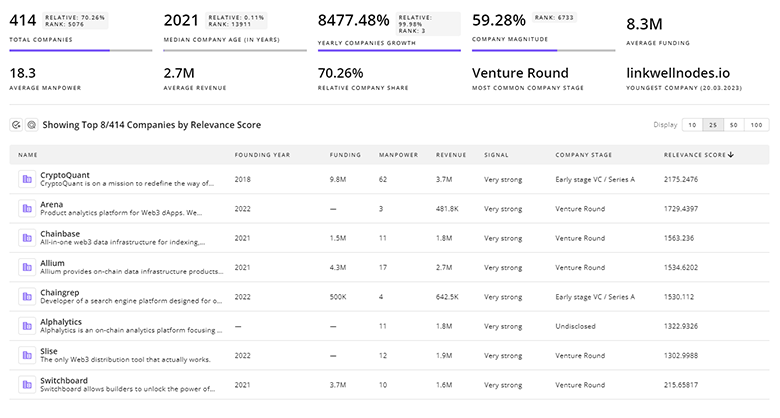
880 Neuromorphic Computing Companies
Discover Neuromorphic Computing Companies, their Funding, Manpower, Revenues, Stages, and much more
Neuromorphic Computing Investors
TrendFeedr’s Investors tool offers comprehensive insights into 739 Neuromorphic Computing investors by examining funding patterns and investment trends. This enables you to strategize effectively and identify opportunities in the Neuromorphic Computing sector.
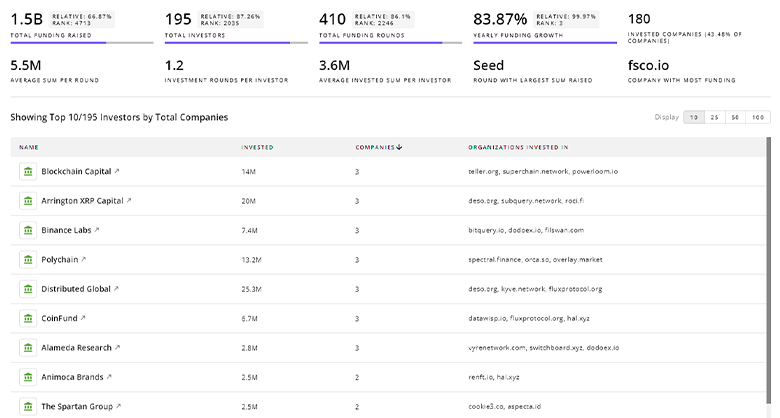
739 Neuromorphic Computing Investors
Discover Neuromorphic Computing Investors, Funding Rounds, Invested Amounts, and Funding Growth
Neuromorphic Computing News
TrendFeedr’s News feature provides access to 7.2K Neuromorphic Computing articles. This extensive database covers both historical and recent developments, enabling innovators and leaders to stay informed.
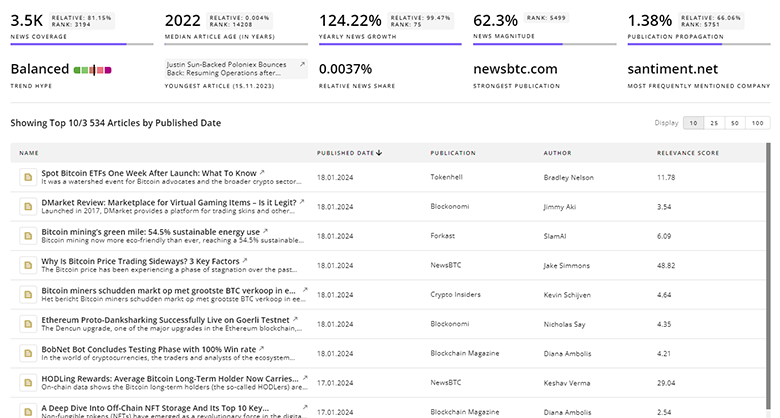
7.2K Neuromorphic Computing News Articles
Discover Latest Neuromorphic Computing Articles, News Magnitude, Publication Propagation, Yearly Growth, and Strongest Publications
Executive Summary
Neuromorphic computing continues to redefine AI hardware by using brain-inspired designs that deliver ultra-low power consumption, minimal latency, and real-time processing capabilities. While some indicators such as reduced growth in company counts and media coverage signal market consolidation in certain areas, robust investment activity, diverse patent filings, and innovative applications across sectors like robotics, healthcare, and edge AI highlight significant potential. Companies such as SynSense, BrainChip, and GEMESYS are at the forefront of these developments, leveraging unique technology stacks to position neuromorphic solutions as critical assets for future edge computing applications.
We value collaboration with industry professionals to offer even better insights. Interested in contributing? Get in touch!
